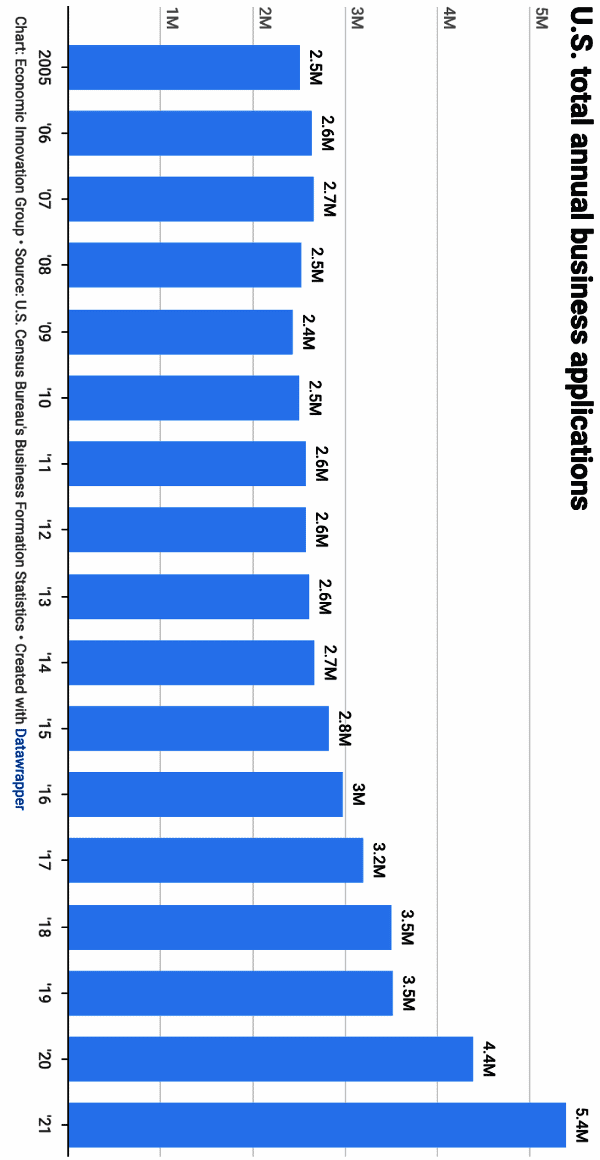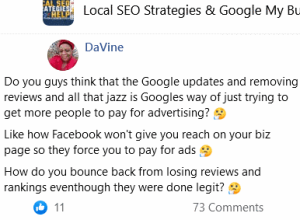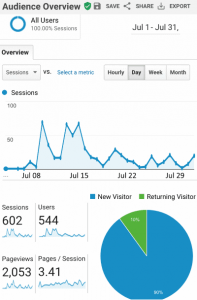u/tasteless
My website about startups made $79,342 this month
Pat from Starter Story here. You may remember me from a couple years ago – when I'd post case studies here on this sub, example: https://www.reddit.com/r/Entrepreneur/comments/8zneu0/11mmonth_selling_beer_coolers_profit_included/.
If you're not familiar, I run a website called Starter Story – we publish case studies on successful companies.
Since this subreddit was a huge reason for the success of my site, I thought I'd follow up and give you guys an update on how the business is going.
This is a bit of a brain dump, but I thought it might be helpful for anyone here starting any kind of online business, and especially if you're doing anything with content, blogging, media, etc.
Some numbers on the business today:
• 1.6M people visit our website every month
• We have 85K active subscribers on our newsletter
• 2.5K members subscribe to Starter Story Premium (more on this below)
• We've conducted over 3,500 case studies
• We've built a team of 8 people at Starter Story
• August < year > revenue: $79,342 (profit: ~$45,000)
Here I'll go over three main parts:
(1) How my website makes money (business model)
(2) How we got traction in the early days, and
(3) How we grew and scaled the business (to $500k in revenue per year).
Feel free to leave a comment with any questions you have, will be in the comments answering anything you throw at me:
(1) How my website makes money (business model)
This is the most common question I get so I figure I'll answer this first.
We make money in 3 ways:
• Premium memberships (~38% of revenue): Members pay a yearly fee and get unlimited access to all of our case studies, databases, and other benefits
• Advertising and sponsorships (~57% of revenue): Companies pay us to advertise their product in our newsletter and our website.
• Affiliate revenue (~5% of revenue): We get paid when a reader clicks an affiliate link on our website and signs up for something or makes a purchase
A bit more details on each of these revenue streams:
1. Starter Story Premium Membership (38% of revenue)
With about 2,500 active members, this income stream generates ~$30k/month on average.
Similar to the New York Times, you can read a limited number of case studies per month for free. If you sign up and pay to be a member, you can read unlimited, plus get access to some of our "databases".
2. Ads & Sponsors (57% of revenue)
"Bring me a f*cking armada of eyeballs."
Companies pay us to advertise their products in our articles or in our newsletter.
We have an audience that falls into a very specific category, so specific brands will reach out to us to advertise. We also go out and pitch brands as well.
3. Affiliates (5% of revenue):
Our case studies & content often mention what products founders use, such as Shopify, Klaviyo, etc.
If a reader clicks a link to these tools, we sometimes get a cut of the sale. This is a smaller part of our revenue but we're hoping to grow it (feedback welcome).
(2) How Starter Story got traction in the early days
I started Starter Story as a side project (while I had a full-time job).
I've had many other projects that have failed… Here's what I've realized is the hardest part about building a side project: not giving up.
IMO the best way to not give up is to aim for some sort of small traction or small positive reinforcement as early as possible. This little bit of traction fueled me every now and then and kept me going.
I was lucky enough to get this traction, and here's how:
1a. Finding a solid distribution channel: Reddit
'If you build it they won't come'
In the early days, I was publishing lots of great case studies, but nobody even knew my website existed…
I realized I needed a distribution channel.
I tried a lot of things and finally found something that worked: posting the case studies on Reddit.
My first success: This post (https://www.reddit.com/r/Entrepreneur/comments/7kyelf/10kmo_selling_a_bidet_product/) hit the top of r/Entrepreneur, and it validated that our case studies with founders were actually interesting and valuable to Redditors.
These Reddit posts would get a lot of upvotes, comments, etc, and some people would enjoy the posts enough to visit Starter Story and read more case studies, subscribe to our newsletter, etc.
There were many positive outcomes of sharing our content on Reddit. Besides its huge reach, these Reddit posts also helped us find our first "sponsors" (advertisers) and it also helped us find more businesses to interview on the site.
1b. Another distribution channel: Hacker News
This is another community that matched our audience's interests: tech, startups, and business.
People on HN seemed to love business success stories and learning how much money people made from online businesses.
Many of the founders we interviewed came from similar backgrounds as the readers on HN (nerds, programmers) and I think they felt a strong connection, which led to upvotes, shares, etc.
What's great about Hacker News is that when you have a popular post, it can result in lots of high-quality traffic. Relevant entrepreneurs, media, etc pay attention to the site.
This is an example (https://news.ycombinator.com/item?id=16429467) of one of our posts that absolutely crushed it there and was a big part of our early traction.
Key takeaway / TLDR: Distribution beats product 99% of the time.
2. Differentiate yourself: Create amazing content you can't find anywhere else
In the early days, I worked hard to make our case studies super in-depth – there was nothing else like it on the Internet.
I wanted to show how people actually built their business, which takes thousands of words.
Our competition at the time: 500-word fluff promotional articles on Forbes and TechCrunch about companies that raised $20M Series A.
We were creating content that was different and better than anything else you could find. We also had something unique that caught people's attention: we always shared how much money people were actually making.
Back then, it was rare to see entrepreneurs being so open about revenue, costs, and profit. We worked hard to get that info into our content, which helped set us apart from other blogs.
Key takeaway / TLDR: Our content was unique, fresh, and interesting which helped us stand out. Because we were different, people would share our site with their friends, on social media, etc.
3. Document the journey
In the early days, I used to write monthly progress reports about my journey building Starter Story.
I would blog, tweet, and create videos about what I was working on, the results I got after trying different strategies, etc. For example, I would write blog posts like this (https://www.starterstory.com/blog/december-update) when the website had less than 1,000 visitors per month and made $0…
I think nowadays this is called "building in public", but I was doing it because I really loved working on this project, learning new things, and writing about them.
Sharing all this stuff not only helped me build a better business, but it also helped me make tons of friends and connections online and build a small personal brand.
Here's the archive (https://www.starterstory.com/stories/starter-story-story) of many of the articles I wrote.
Key takeaway / TLDR: Writing or sharing your journey can (1) help you understand your own priorities and (2) attract likeminded people into your corner.
(3) How Starter Story went from side project to $500K+/year
Lastly, I want to talk a bit about how Starter Story went from a small side project to a "real business".
One thing I've learned as I've grown Starter Story: what worked in the past won't necessarily work in the future. What got us from 0 to $10,000/month is different than what got us from $10k to $20k/month, and so on.
Growing the business has been (and still is) a constant challenge. I feel like we've had to reinvent ourselves multiple times to get where we are… But I guess that's what building and scaling a business is all about?
Anyways, here are some of the key things that led to our growth:
1. We found a more reliable distribution channel: Search Engine Optimization (SEO)
Back in early < year >, we were making a bit of money, but not more than $5,000/month.
I realized that in order to grow this business, we needed more (and better) distribution (again). Reddit and Hacker News were not scalable channels of distribution for us as the novelty of our case studies had mostly worn off.
So, we started looking into a new channel: Search Engine Optimization (SEO).
We started creating content that would do well in search engines, for example, golfers searching for business ideas (https://www.starterstory.com/golf-business-ideas).
We repackaged our content to match high-level search keywords and it was a big success. Another example: we find our case studies of companies from Canada and create an article titled something like "18 businesses you can start in Canada".
This strategy resulted in 10x organic traffic growth over the next year, and it's how we reached over 1 million visitors to our site per month.
Key takeaway / TLDR: Find a truly scalable method of distributing your product. Some good ones: Search Engine Optimization (SEO), YouTube, social media, direct sales.
2. Go all in + a stroke of luck
"Let your winners ride"
I used to be the guy that had 12 different unrelated businesses/projects going at once.
I wasn't able to commit to one idea, so I just kept creating and trying new things.
I don't think it's bad to try a lot of things (especially early on), but it's nearly impossible to build two really successful businesses at the same time.
In early < year >, I decided to drop all my other projects and go full-time on Starter Story.
Somewhat coincidentally, this was also the time that the c0v1d pandemic took over the world, which actually became a "boom" for entrepreneurs around the world.
More people than ever were sitting at home, browsing the internet and wanting to find a side hustle or ways to make money online. In < year > and < year >, we saw records in terms of new startups and businesses created, see image.

This led to a ton of interest in Starter Story.
We certainly got lucky with the circumstances around the pandemic, but I'm not sure I would have been able to capitalize on this opportunity if I was still working on 12 different projects.
Key takeaway / TLDR: Pick one idea and go all in.
3. We diversified our revenue with a paid membership
Years ago, we relied 100% on sponsorships and ad revenue.
As a bootstrapped company, we can't rely on one source of revenue, especially if the "plug" could be pulled on us at anytime.
I realized we needed to diversify our revenue streams.
About 3 years ago, we started putting together a paid version of our product (Starter Story Premium) we've refined it ever since.
We first started with our paywall, and then added more premium products like our 'Business Ideas database', our 'Case Studies Database', and more.
The idea is that somebody finds our website through Google, hears about it from a friend, or some other way, and enjoys the site. Hopefully, they will enjoy it enough to give us their email and sign up for our free email newsletter.
Once they subscribe to our email newsletter, we try to keep them as engaged as possible, and eventually show them enough great content that they feel our premium membership is worth it.
Sometimes people consume our content for over a year before getting a membership. Some people sign right away, too.
Key takeaway / TLDR: As a bootstrapped company, we don't have the luxury of millions sitting in the bank in case something goes wrong. Therefore, it's better to have more reliable revenue, even if it's at the cost of growth.
4. We built systems and processes for everything possible
As a developer, I've built dozens of small tools and automations that have allowed us to scale content with a small team.
I've automated every piece of the business possible. If something is not possible to automate, we try to hire and outsource the work.
For us, this is one of our advantages and really helped us grow. We are a bootstrapped business, and we can't afford many of the things that well-funded startups can. So, I try to embrace how scrappy we are, even if it sometimes breaks things 🙂
Key takeaway / TLDR: Take advantage of your own skills, and make them your competitive advantage. For me, I had developer skills, and I used these to save a ton of money and make the biz more efficient.
There's still so much more I could write about the journey, but I'll stop here.
If you want to know more about the business, want me to clarify some things, or if you have a question just drop it as a comment I'll try to respond by the end of the day.
Thanks for reading!
257 💬🗨
16 Months of Buying Links: What I learned, and What to Avoid
A Dropshipping Store past $1m in 6 Months





